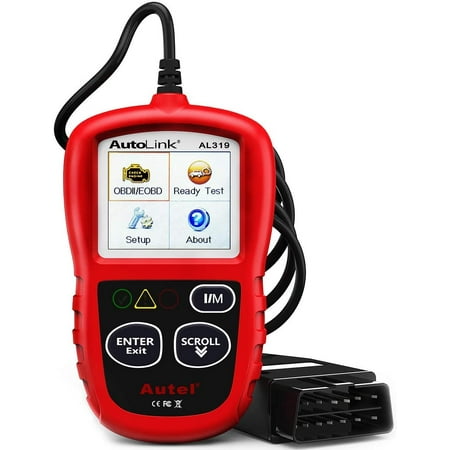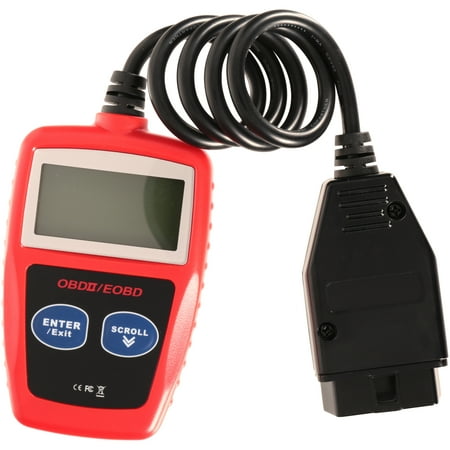Bluetooth Car Scanner Android Torque Auto Diagnostic Scan
Model: HHOBD- Quantity: 1- Color: Black- Material: Plastic- Operating voltage: 12V- Bluetooth effective distance: 10m- Bluetooth ELM327 is the newly developed wireless scan tool. It supports all OBD-II protocols- Automatic with SAE J1850 PWM (41.6Kbaud) / SAE J1850 VPW (10.4Kbaud) / ISO9141-2(5 baud init,10.4Kbaud) / ISO14230-4 KWP (5 baud init, 10.4Kbaud) / ISO14230-4 KWP (fast init, 10.4Kbaud) / ISO15765-4 CAN (11bit ID, 500Kbaud) / ISO15765-4 CAN (29bit ID, 500Kbaud) / ISO15765-4 CAN (11bit ID, 250Kbaud) / ISO15765-4 CAN (29bit ID, 250Kbaud) / SAE J1939 CAN (29bit ID, 250Kbaud) / USER1 CAN (11bit ID, 125Kbaud) / USER2 CAN (11 bit ID, 50Kbaud)- Read diagnostic trouble codes (both generic and manufacturer-specific), and display their meaning (over 3000 generic code definitions in the database).- Support software: Palm /PDA, Windows PC, Windows smart phone- Support SAE J1850- Support CAN cable- Clear trouble codes and turn off the MIL (“Check Engine” light)- Display current sensor data, including: Engine RPM / Calculated Load Value / Coolant Temperature / Fuel System Status / Vehicle Speed / Short Term Fuel Trim / Long Term Fuel Trim / Intake Manifold Pressure / Timing Advance / Intake Air Temperature / Air Flow Rate / Absolute Throttle Position / Oxygen sensor voltages / associated short term fuel trims / Fuel System status / Fuel Pressure- Packing list:- 1 x Scan tool- 1 x CD (English)Dimensions: 2.76 in x 1.77 in x 0.98 in (7.0 cm x 4.5 cm x 2.5 cm)





Support software: Palm /PDA, Windows PC, Windows smart phoneSupport SAE J1850Support CAN cableClear trouble codes and turn off the MIL (“Check Engine” light)Display current sensor data, including: Engine RPM / Calculated Load Value / Coolant Temperature / Fuel System Status / Vehicle Speed / Short Term Fuel Trim / Long Term Fuel Trim / Intake Manifold Pressure / Timing Advance / Intake Air Temperature / Air Flow Rate / Absolute Throttle Position / Oxygen sensor voltages / associated short term fuel trims / Fuel System status / Fuel Pressure





Reviews
There are no reviews yet.